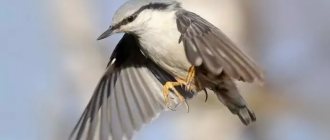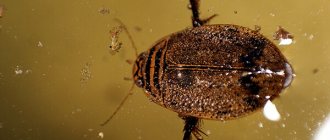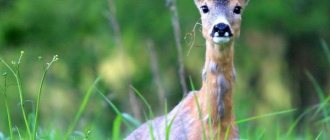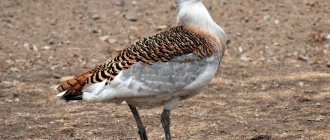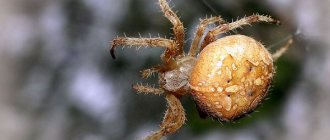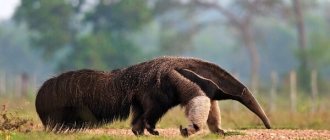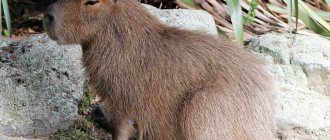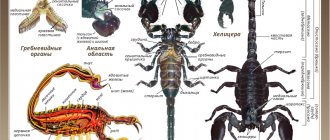Dimensions
The dimensions of an adult python can vary greatly depending on its species. Children's Python (Antaresia childreni) is considered "very small". This relatively lightweight member of the Pythonidae family grows up to 1.2 meters in length. Some Australian pythons (genus Liasis) never grow longer than one meter, but a number of pythons from the African continent (Python sebae), India (Python molurus), New Guinea (Leiopython papuanus) and Australia (Leiopython amethistinus) grow over three meters.
Photo: Stock photos
The tiniest species is the pygmy python (Antaresia perthensis), measuring about 60 centimeters. It is also the lightest python, with body weight ranging from 200 to 210 grams.
At the other end of the spectrum is the reticulated python. This is not only the longest species of snake on the planet, reaching a body length of 10 meters in the wild, but also one of the heaviest - its mass is 159 kg.
Characteristic
Python is a large non-venomous snake. But this is a very dangerous predator. Body length can reach up to seven and a half meters.
The reticulated python, for example, is just the largest size. These are inactive reptiles that prefer warm climates and air temperatures above +25 degrees Celsius.
Interesting! The python is able to swim and climb trees, so the list of possible prey for this snake is quite long.
Pythons are related to boas, but differ from them in a number of characteristics, both external and internal.
Zoologists count 9 genera of pythons, with several species in each. In total, scientists know and describe 41 species of this large, beautiful and dangerous snake. The classification by genera is as follows:
- True pythons - 10 species;
- Aquatic - 3 types;
- Australian rhomboids - 12 species;
- Ringed - 1 species;
- Australian dwarf - 4 species;
- Blackheads - 2 species;
- Genus Broghammerus - 2 species;
- Genus Apodora - 1 species;
- Genus Leiopython - 6 species.
There is information about a couple of extinct species. Australian dwarfs are perhaps the most favorite among those who keep terrariums.
The point is size: these reptiles cannot be called anything other than snakes, since the length of some of them is 50 cm and their weight is about 200 g.
If you want to know other interesting facts about animals, we recommend reading the article
Interesting! Pythons are generally considered dangerous snakes, and for good reason, but these reptiles have no poison.
Appearance and anatomical features
Pythons are impressive snakes in everything from their six rows of razor-sharp teeth and independently moving jaw to their prehensile tail, three-quarters of which securely wraps the snake around its prey during an attack.
There are hundreds of pythons with different colors and patterns, from solid to bicolor, striped, ringed, spotted and even rainbow. The appearance of unique colors is associated with the characteristics of the native geographical regions of the snakes’ habitat.
Photo: David Clode
Pythons also have several anatomical features:
- presence of two lungs. Most representatives of the serpentine kingdom lack the left lung, and the right one is elongated and expanded;
- teeth grow on the premaxillary bones;
- presence of supraorbital bone;
- the hemipenes contain vestigial bones.
Diet, prey
Pythons are carnivorous snakes; they are not satisfied with plant foods . Lizards, rodents, rabbits, birds, as well as frogs and fish become prey for these snakes. Often the victim is much larger than the snake’s head, but the jaws, designed in a special way, allow the mouth to open much wider than expected, literally stretching over the food and pushing it inside the body.
The digestion process, during which the python hardly moves, lasts a long time - from 7 to 30 days.
Return to content
Spreading
Pythons are distributed primarily in the Eastern Hemisphere. The range of members of the Pythonidae family spans four continents, although they are native to only three: Asia, Australia and Africa. Reticulated pythons have been spotted swimming in the ocean, which is likely how they ended up on the Pacific islands, where some are now actively breeding.
Photo: Cory Routh
Eight species of the genus Python live in sub-Saharan Africa. Many are native to India and are found in Southeast Asia, including southern China, the Philippines and the Moluccas Islands of Indonesia. Other related genera occur in New Guinea and Australia.
The bicolor snake (Loxocemus bicolor) is the only New World python. It is also the only member of the family Loxocemidae. The bicolor snake is found in forests from southern Mexico to Costa Rica. It usually grows up to a meter in length, but some specimens reach almost 150 centimeters. The bicolor snake is primarily crepuscular, feeding on the ground on a variety of small vertebrates.
First Python program
Traditionally, learning any programming language begins with the “Hello, World!” program. Its essence is that you need to display the inscription... “Hello, World!” on the screen. Let's compare what the text of this simple program looks like in different languages.
C#:
Copy Copied Use a different Browser
using System; namespace HelloWorld { class Hello { static void Main() { Console.WriteLine("Hello World!"); } } } Go:
Copy Copied Use a different Browser
package main import "fmt" func main() { fmt.Println("Hello, World!") } Java:
Copy Copied Use a different Browser
public class HelloWorld { public static void main(String[] args) { System.out.println("Hello, World"); } } Python:
Copy Copied Use a different Browser
print("Hello, World!") Yeah, what could be simpler than "print("Hello, World!")"


